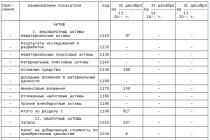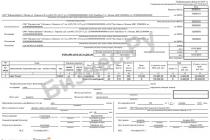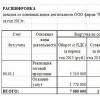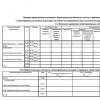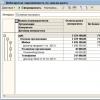The primary documentation received by the accounting department is necessarily subjected to verification both in form and in content. The correctness and completeness of registration, the presence of mandatory details, the legality of recorded transactions, the logical connection of indicators are evaluated. After that, the registration and grouping of data is carried out. Information is recorded in the system of analytical and synthetic accounts. For this purpose, accounting registers are provided: forms of accounting. Let's consider further what they can be.
General information
Accounting registers are special tabulation tables. They are formed according to the economic grouping of information about property and sources. Forms of accounting registers are necessary to reflect ongoing business transactions in the relevant accounts.
Classification
Existing types of accounting registers are divided according to purpose, appearance and method of summarizing data. According to the first criterion, documents are distinguished:
- Systematic.
- Chronological.
- Combined synchronous.
Chronological accounting registers are documents in which records of the facts of economic activity are made as they are carried out, without other systematization. These include, for example, registries. Entries are made in systematic tables according to grouping characteristics - accounts. Information from these two types of registers should complement each other. Therefore, the sum of turnovers for chronological documents is always equal to the sum of credit/debit figures from systematic tables. When both chronological and systematic records are entered into one register, it is considered combined (synchronistic).

Summarizing information
On this basis, accounting registers are divided into differentiated and integrated. Consideration of data can be carried out inductively, that is, to the general from the particular. In this case, information integration takes place. Also, generalization can be carried out deductively: to the particular from the general (from reporting to primary documentation). In this case, there is differentiation of information.
Appearance
According to this criterion, the following accounting registers are distinguished:
- Books. They are a document marked in a special way, laced, bound and signed by a responsible person (chief accountant).
- Cards. They are forms printed as tables.
- Free sheets. Such accounting registers are tables placed on forms that are subject to binding. Such sheets are considered an alternative to books and cards. These papers are kept in folders. For them, as well as for cards, registers should be kept.
- Machine media. These accounting registers have technical features. In this case, the data are placed not on paper, but on electronic media (drive).
Consider the main accounting registers separately.

Books
These registers contain information about the facts of economic activity (operations). It is distributed according to the specifics of the objects. Books must be designed in accordance with the requirements of the rules. Besides the fact that they must be bound, laced and numbered, the number of pages must be indicated on the back of the last sheet. Under the indicated number, the signatures of the head of the enterprise and Ch. accountant, stamped. Typically, books are used in cases where the objects of observation are in small numbers. But for a number of categories (for example, for cash transactions), enterprises keep records in the cash book, where all events are entered. The general ledger summarizes all objects.

Cards
This is a fairly convenient form of registers. They can be sorted, they are distinguished by visibility and accessibility when handling. Externally, the cards may be different. The most common types include: contract, multi-column and inventory. The first ones are filled in on one side, since the debit and credit columns are located side by side. The presence of parallel columns allows you to see the state of settlement operations of the enterprise. Material values are taken into account in inventory cards. They enter the column "Remainder". It reflects the amount of funds remaining after the registration of a business transaction. Therefore, in each account there are columns for receipts, expenses and balances. The heading contains the standard (limit) for the stock. Its presence allows you to easily determine whether these funds are present in the enterprise in larger quantities than expected. If it turns out that there are fewer of them, then the difference with the limit is set. In multi-column cards, the operations of the economic life of the company are taken into account with the allocation of components in the columns. This, for example, is relevant for cases where a fact is recorded in complex amounts, that is, the payment of various expenses of the company is reflected.

Loose sheets
They are larger than cards. Accordingly, the volume of information that is reflected in them also increases. In accounting practice, free sheets are different statements. They are used to generalize homogeneous data. For example, they reflect depreciation on fixed assets, the release (shipment) of goods, and so on.
Machine media
They can be floppy disks, disks, etc. When using such registers, the enterprise must make paper copies of documents. This is done, among other things, at the request of the authorities authorized to exercise control, as well as the court and the prosecutor's office. Media features determine the order in which information is arranged. Their use is determined by the mass nature of the operations carried out, the specifics and volume of accounting objects and other factors.

Conclusion
The correctness of recording business transactions in accounting registers is ensured by the persons who compiled and signed them. In the process of storing such documentation, it is necessary to ensure the protection of information from unauthorized correction. Corrections of errors in accounting registers must be justified and confirmed by the signature of the employee who made the changes. In this case, the date of correction must be indicated. In accordance with the Federal Law "On Accounting", the information contained in the registers is classified as a trade secret. Persons who have access to such documentation are required to keep it. For the disclosure of information, violators are liable in accordance with the norms of domestic legislation.



